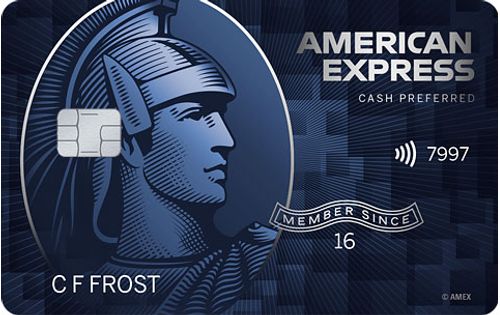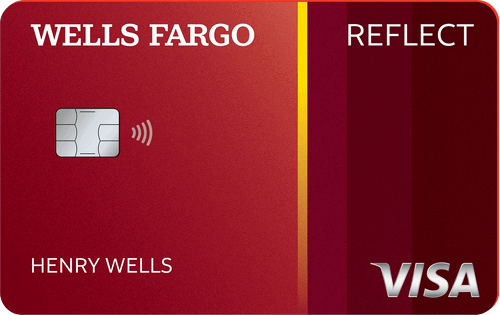Christie Matherne, Credit Card Writer
@christie_matherne
You can pay many bills with a credit card, including bills for cell phone plans, car and life insurance, streaming services, cable and internet, medical expenses, taxes, and more. Other bills may also allow credit card payments, depending on the merchant, including health insurance, homeowners insurance, and car loan bills. Finally, there are some bills that you may not be able to pay directly with a credit card: rent, mortgage payments, other credit card bills, and student loans.
Of the bills that allow credit card payments, some will add a fee for using a credit card. For example, paying your taxes with a credit card can result in a fee of 1.75% - 2.89%. There are also bill payment apps, such as Plastiq, which accept credit card payments and then pay your bill for you, via check or deposit, for a fee. On the other hand, if you pay bills with a rewards credit card, you can earn what amounts to a discount in the process, unless your rewards are canceled out by extra fees.
Bills You Can Typically Pay with a Credit Card
- Utilities
- Cell phone
- Car insurance
- Subscriptions
- Streaming services
- Cable
- Internet
- Medical bills
- Taxes
- Health insurance
- Renters insurance
Bills That May Not Accept Credit Card Payments
- Homeowners insurance
- Car loan
- Rent
- Life insurance
Bills That Don’t Accept Credit Card Payments
- Credit card
- Student loan
- Mortgage
Now that you know which bills you might be able to pay with a credit card, here’s how to begin doing so.
How to Pay Bills with a Credit Card
- Check with the merchant to see if they’ll accept a credit card payment. Check your bill first, as the bill usually mentions payment methods. You can also check with customer service. If they do accept credit cards, use the merchant’s payment portal online if they have one, or pay over the phone.
- Use a third-party service if the merchant does not accept credit cards directly. Consider a third-party service if their fee is less than the credit card rewards you would earn on the payment. You can use Plastiq, for example, to pay most bills with a credit card. Just create a Plastiq account, add your credit card as a payment method and add your payee as a vendor, then schedule a payment. Your vendor can receive the money by check, ACH, or wire transfer.
- Take out a credit card cash advance to pay your bill in cash. If you’re really desperate to pay a bill that won’t accept credit card payments directly, you can take out a cash advance, but keep in mind that a cash advance is an expensive option and should only be used as a last resort. To take out a cash advance, get a PIN for your credit card and insert your card into an ATM. You can also bring your credit card and a photo ID to a bank or credit union branch to get a cash advance from a teller. Then, depending on what your payee accepts, pay your bill in cash or deposit the cash into your bank account and pay your bill with a check. You can also use the cash to purchase a money order or cashier’s check and pay your bill with it.
Many methods of paying bills with a credit card will result in fees from all angles, including fees from third-party bill payment services, credit card issuers, and even the merchant you’re paying.
Common Fees for Paying Bills with a Credit Card
Fees from vendors and third-party services.
If you decide to pay things like your rent, mortgage, or car loan bill through a third-party service using a credit card, you can expect to pay roughly 2.75% - 3.5% in extra fees, depending on the company. Even if you pay the bill directly with a credit card, without using a third-party service, the vendor you’re paying may charge a credit card processing fee.
Fees from credit card issuers.
Withdrawing cash from your credit card to pay your bills can be costly, with an average fee of 4.02% of the advance amount. Interest begins accruing immediately, too, which can quickly become a huge expense.
If you choose to pay off a credit card with another credit card by doing a balance transfer, you’ll typically pay a fee of around 3% of the transferred balance. On a rare occasion, you might be able to find a credit card without a balance transfer fee that also offers a low APR.
You’ll likely be able to pay some types of bills – such as utilities, streaming services, other subscriptions, internet, cable, and car insurance – with your credit card directly, without significant fees or any fees at all, depending on your service provider.
For more advice on getting the most out of your credit card, check out WalletHub’s guide to making credit card purchases.

People also ask
Did we answer your question?
Important Disclosures
Ad Disclosure: Certain offers that appear on this site originate from paying advertisers. For full transparency, here is a list of our current advertisers.
Advertising impacts how and where offers appear on this site (including, for example, the order in which they appear and their prevalence). At WalletHub we try to present a wide array of offers, but our offers do not represent all financial services companies or products.
Advertising enables WalletHub to provide you proprietary tools, services, and content at no charge. Advertising does not impact WalletHub's editorial content including our best picks, reviews, ratings and opinions. Those are completely independent and not provided, commissioned, or endorsed by any company, as our editors follow a strict editorial policy.



